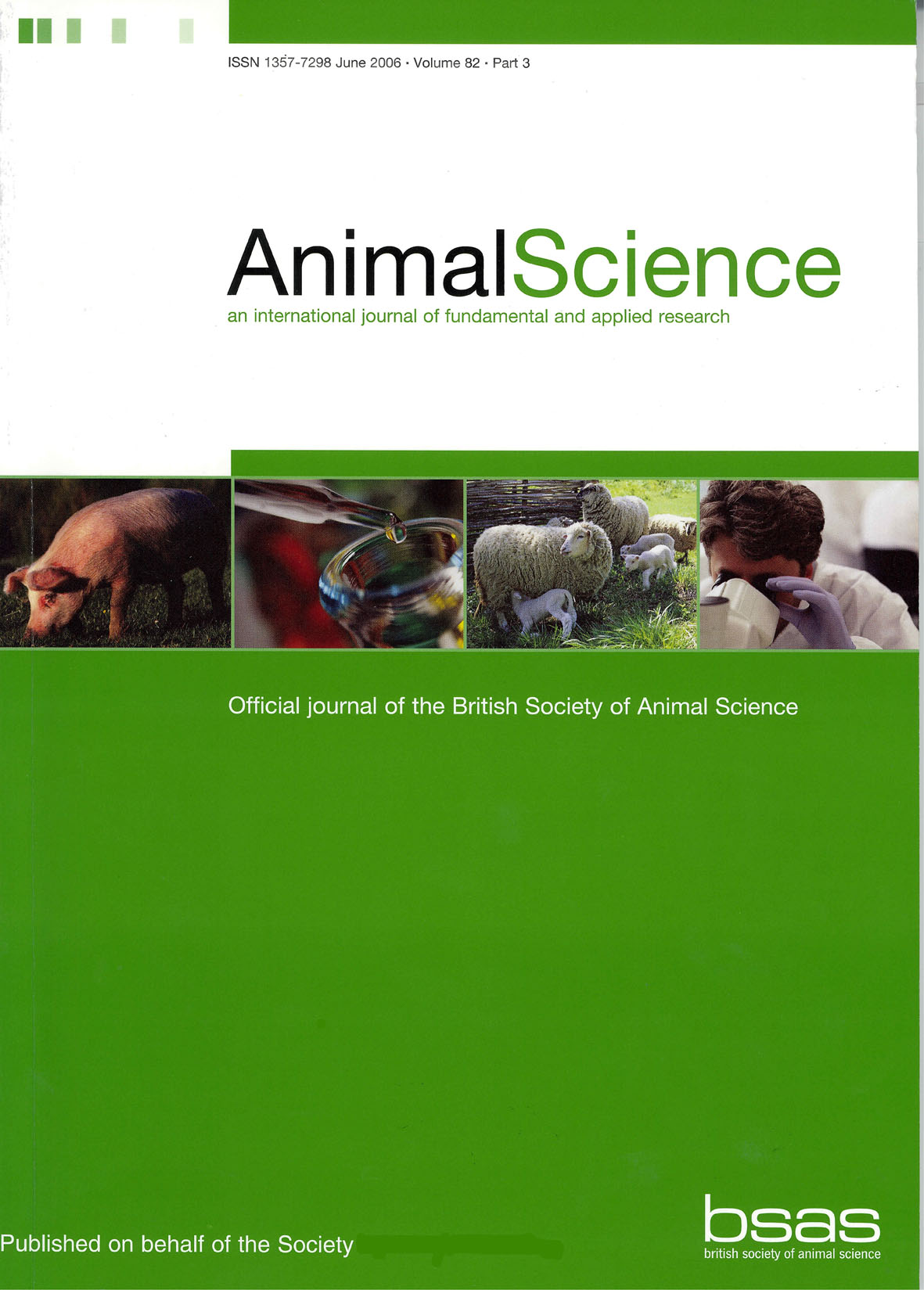Article contents
Nutrient partitioning in Merino rams with different wool growth rates
Published online by Cambridge University Press: 02 September 2010
Abstract
The aim of this experiment was to determine whether there is any physiological basis for concerns that selection for fleece mass may decrease fitness by increasing the partitioning of nutrients to wool at the expense of other body functions.
Forty-five Merino rams (24 months old) were given food at an ad libitum and a maintenance level of nutrition. Animals were grouped into high, average or low clean fleece growth-rate categories on the basis of measurements made during the ad libitum feeding period. During ad libitum feeding, high producers grew proportionately 0·42 more clean fleece, and deposited proportionately 0·36 more energy and 0·42 more nitrogen (N) as greasy fleece than average producers. This was achieved by partitioning a higher proportion of N consumed to wool (0·08 v. 0·06), and not by increased energy or N retention. High producers adapted to the maintenance diet by decreasing clean wool growth rate proportionately by 0·32. There were no differences between high and average wool producers in clean wool growth rate or the percentage of N or energy intake partitioned to wool at the maintenance level of feeding. Although there were no differences in initial live mass between groups, low producers gained proportionately 0·45 more live mass during the experiment than average producers.
It was concluded that Merino rams of high clean-wool production potential are not more efficient, but partition more of the available nutrients to wool production at the cost of body tissue deposition.
- Type
- Research Article
- Information
- Copyright
- Copyright © British Society of Animal Science 1994
References
- 7
- Cited by


